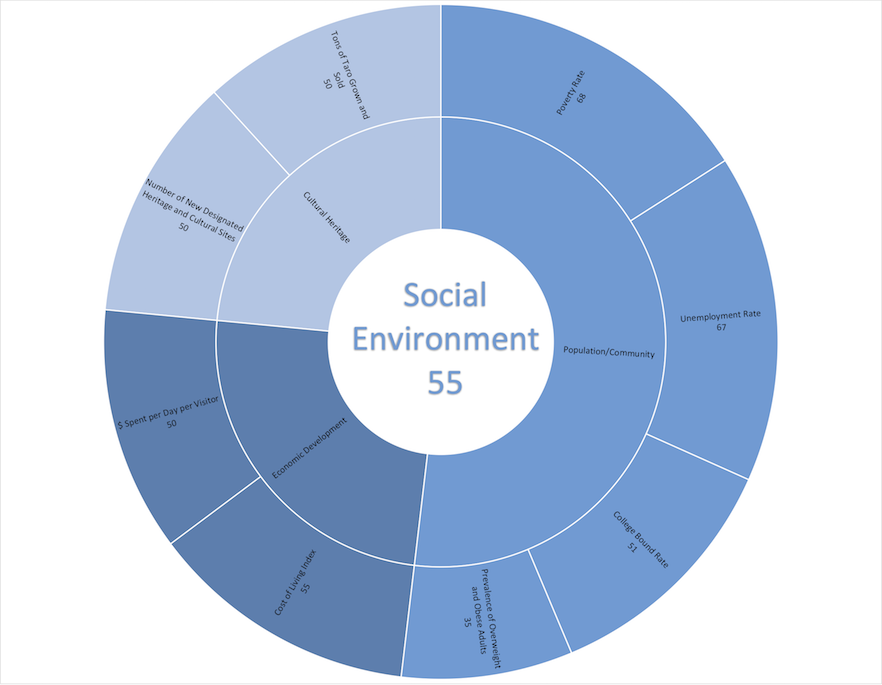Social Environment Indicators
The social environment comprises economic development, population and community dynamics, and the preservation of our cultural heritage. In recent times, Maui has undergone significant changes as it transitioned from a plantation society to a tourist destination. To preserve the quality of life on Maui, economic and social progress must be linked to each other and to cultural preservation.

Economic Development
Economic development directly influences the quality of life enjoyed by Maui residents. A good quality of life demands that wages match the increases in cost of living. Individual quality of life also depends on a productive and healthy agricultural sector. Economic activity should maximize its value to people and minimize its costs
Population/Com.
This category pertains to personal and collective quality of life. Although some of the indicators here track people in the economic dimension, these factors are distinct from the economic development factors as they track people directly rather than the economy in general.
Cultural Heritage
Hawai`i has a unique cultural heritage which impacts the way we live on Maui. In fact, the Hawaiian way of life is often ranked as one of the most important factors in why residents choose to live here despite the high costs of living, moderate wages, and increasing traffic congestion. Preserving cultural heritage celebrates the broad blending of cultures and ethnicities on the island, enriches residents’ lives, attracts visitors, provides a connection to the past, and promotes a sense of place.